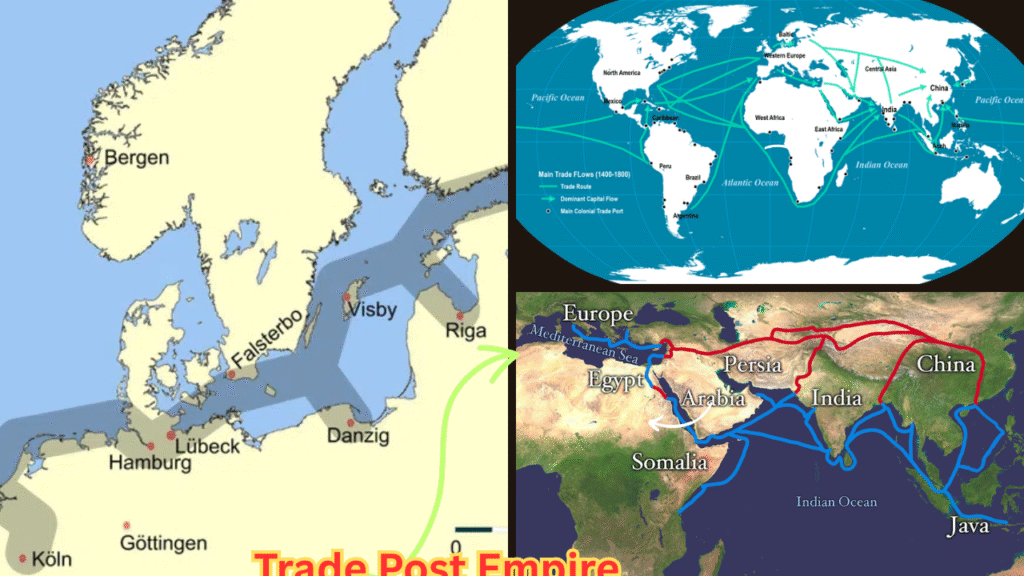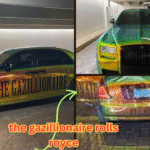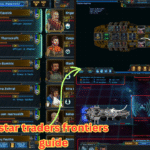Introduction
When we look back at history, one of the most powerful engines of human progress has been trade. Beyond just the exchange of goods, trade built cities, connected cultures, and shaped empires. Among the many fascinating parts of global history lies the idea of the “Trade Post Empire”—a system where countries established overseas trading posts to control commerce, expand influence, and dominate world markets. This article explores what a trade post empire was, how it developed, and why it left such a lasting impact on the modern world.
What is a Trade Post Empire?
A Trade Post Empire was not about conquering vast lands or ruling large populations. Instead, it focused on strategic points along trade routes, often coastal cities or key harbors. From these posts, powerful nations could control the flow of goods, collect taxes, and expand their economic influence without needing to fully occupy entire regions.

In simple words, it was like owning the toll booths of the ocean. Whoever controlled the posts controlled the trade, and whoever controlled the trade often gained great wealth and power.
Early Examples of Trading Posts
Trading posts have existed since ancient times. The Phoenicians set up posts around the Mediterranean to trade glass, purple dye, and timber. The Arabs used ports across the Indian Ocean for spices and textiles. But it was during the Age of Exploration (15th–17th centuries) that the real concept of a trade post empire flourished.
The Portuguese: Founders of the First Trade Post Empire
The Portuguese were pioneers in this system. With explorers like Vasco da Gama and Prince Henry the Navigator, they sailed around Africa and reached India. Instead of trying to conquer whole kingdoms, they established fortified ports at strategic points:
- Goa in India (a hub for spices)
- Hormuz near the Persian Gulf (to control trade routes)
- Malacca in Southeast Asia (gateway to the spice islands)
- Mombasa and other East African ports
Their empire was built on naval power and fortified posts, ensuring they could control and tax trade between Asia, Africa, and Europe.
The Dutch Trade Post Empire
In the 17th century, the Dutch East India Company (VOC) rose as a global trading powerhouse. The Dutch didn’t seek to conquer huge territories; instead, they controlled key trading cities like:
- Batavia (Jakarta, Indonesia) – their main base
- Cape Town (South Africa) – a refueling station on the way to Asia
- Ceylon (Sri Lanka) – famous for cinnamon trade
The Dutch excelled at organization and used advanced ships to dominate trade in spices, silk, and tea. Their empire was one of commerce, not conquest.

The English and French Trading Posts
The British and French also built trade post empires. At first, they competed with Portugal and the Netherlands, but eventually, their posts grew into colonies. Examples include:
- British posts in India – Calcutta, Madras, Bombay
- French posts in Pondicherry (India) and Vietnam
- Caribbean islands – both powers built posts for sugar and tobacco
While the British eventually moved beyond posts to establish a territorial empire, their initial strategy was similar—control trade routes before ruling land.
Why Were Trading Posts So Important?
Trading posts were not just warehouses. They were centers of power and culture.
- Economic Control – Nations taxed goods and created monopolies.
- Cultural Exchange – Ideas, foods, and traditions spread across continents.
- Military Strongholds – Fortified posts helped protect merchants and navies.
- Gateway to Colonization – Posts often became the first step toward larger empires.
Goods Traded Through Trade Post Empires
The world’s most valuable goods flowed through these posts. Some examples include:
- Spices – pepper, cinnamon, nutmeg, cloves
- Textiles – silk, cotton, and wool
- Precious Metals – gold and silver
- Tea, Coffee, and Sugar – which changed diets worldwide
- Slaves – tragically, many trading posts also fueled the transatlantic slave trade
These goods made European nations extremely wealthy and shifted the balance of global power.
The Downside of Trade Post Empires
While trade brought prosperity, it also brought conflict and exploitation.
- Local economies often became dependent on European powers.
- Indigenous people were exploited, and resources were taken away.
- Rival empires fought wars over posts, leading to destruction.
- The rise of slavery became one of the darkest parts of this system.
The Decline of Trade Post Empires
By the 18th and 19th centuries, many trade post empires evolved into full colonial empires. The British, for example, went from controlling ports in India to ruling the entire subcontinent.
New technologies like steamships, railways, and telegraphs reduced the need for small coastal posts, as empires began to expand inland. Eventually, after independence movements in the 20th century, many of these posts became part of modern nations.
Legacy of Trade Post Empires
Even though they declined, trade post empires left behind:
- Cosmopolitan Cities – like Goa, Cape Town, and Malacca, which remain multicultural centers.
- Global Trade Routes – that laid the foundation for today’s shipping networks.
- Cultural Blending – foods, languages, and traditions mixed across continents.
- Modern Globalization – the idea of interconnected markets began with trade post empires.
Conclusion
The story of trade post empires reminds us that history is not only about wars and kings but also about ships, spices, and marketplaces. These empires shaped the modern world by connecting distant regions and laying the groundwork for global trade. While they brought wealth and progress, they also created deep scars through exploitation and colonization.
Today, when we buy goods made in different corners of the world, we are experiencing the legacy of those old trade posts. The world remains a connected marketplace, just as it was when the first European ships set sail in search of spices and silk.


